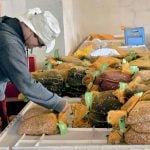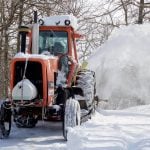Price insurance scheme still missing | CCA president says producers have been abandoned in the new five-year framework
The cattle industry has been largely abandoned in the country’s new five-year agriculture policy, says the president of the Canadian Cattlemen’s Association.
Martin Unrau told the CCA annual general meeting in Ottawa March 7 that his 1,000 acres of grain and oilseeds have basic protection through crop insurance, despite declines in program coverage under Growing Forward 2, which starts April 1.
However, livestock price insurance remains only a promise, despite years of government commitments. His 550 head cattle operation in southern Manitoba has no insurance protection.
“We (in the cattle sector) are getting the crap beat out of us,” he told Lloyd Rosser, Agriculture Canada’s business risk management (BRM) director general. “I wrestle with equity between sectors.”
Read Also

More factors affecting winter weather
When you combine a weak La Niña, early Siberian snow, and a warm northern Pacific, it’s easy to see why long-range winter forecasting is so complex.
Rosser was at the CCA meeting to describe changes to BRM funding, including a drop in AgriStability triggers to a 30 percent income reduction from the existing 15 percent reduction trigger.
He said the new rules will improve coverage for negative margins at the bottom of the income cycle.
Government contributions to the AgriInvest program will also fall, reducing the subsidy benefit for farmers but allowing them to invest more of their own money.
Federal and provincial governments could save several billion in farm support payments over the next five years if farm incomes decrease from current record highs, according to government estimates.
Agriculture Canada’s spending estimates for the fiscal year beginning April 1 project a reduction of at least $230 million, mainly in the BRM file.
It is partly because of program coverage cuts and partly because of assumptions that higher commodity prices will produce a lower draw on support programs.
However, Unrau said the new farm program system continues to discriminate against livestock producers faced with higher feed costs but without the support of an insurance program if production is curtailed.
“The grain side of my operation did very well with AgriStability,” he told Rosser. “The cattle side not so much.”
In an interview, Unrau said the 70 to 85 percent income drop level under existing AgriStability rules was often the range that cattle producers could use.
“That is now gone so then we need an insurance backup,” he said.
Rosser said work continues on creating a livestock price insurance program as promised in the Growing Forward frameworks that ministers accepted in 2007 and 2012.














